It’s not so simple
I hear and read it again and again: claims that laboratory-grown diamonds are more ethical, more sustainable, greener.
Did you know that – according to the Competition Bureau of Canada, it is illegal to make a sustainability claim about something unless it has been proven to be sustainable? And the above claim has not been proven – not by a long way.
This is why you should always dig deeper when you read such claims.
But let me back up.
What is a diamond?
First let’s clarify the difference between imitation diamonds, and lab-grown diamonds (also referred to as synthetic diamonds). Lab-grown diamonds have the exact same properties as natural diamonds (they consist of the same molecules, both have varying qualities as expressed in the 4Cs, and are an equally hard material).
In contrast, imitation diamonds (also called diamond simulants) such as Cubic Zirconia (CZ) and Moissanite, are exactly that: imitations of diamonds, made from artificial materials. The most important thing for you to know as a consumer: while they may look great the first day, they will – due to their softness – not retain their sparkle – not in the least. I have seen some very sad examples of this.
But diamonds are diamonds: lab-grown or earth-mined, they are identical in every respect (chemically, physically and optically), except for their birthplace, so to speak, and the amount of time they took to come into existence.
Whether in nature or in a laboratory, diamonds are made up of carbon atoms, with the addition of 3 ingredients: heat, pressure, and time. In the natural world, this would involve the heat and pressure from deep under the earth’s mantel, and millions of years. I mean .. wow, right?

How are diamonds grown in a lab?
Since the first rudimentary efforts in the 1950s, it took decades to develop quality lab-grow diamonds. Today, they are made in one of 2 methods: the CVD method (Chemical Vapour Deposition), or the HPHT method (High Pressure/High Time).
The fastest way to grown diamonds in a laboratory is the HPHT method. As the name suggests, high temperature (1300-1600 °C) and high pressure (870,000+ pounds sq inch) are used to grow a 1ct diamond in only 2 weeks.
My new supplier grows in the CVD method (Chemical Vapour Deposition), where a sliver of excellent quality diamond is set as a ‘seed’, and carbon vapour is added slowly, under much less intense heat (900-1200°C) than in the HPHT method. Every few days, the diamonds are removed briefly to polish their outer surface in order to remove any carbon which hasn’t formed into diamond.
Most CVD-method lab-grown diamonds end up brown, and need to be treated to become colourless.
I am happy to report that my supplier creates “As Grown” diamonds: these diamonds are not altered at all. Through their patented process, the diamonds grow so gorgeously, no enhancement is needed at all – a very unusual situation.
Are lab-grown diamonds more sustainable, more ethical, more green?
Finally we are back at the questions at hand. And the answer is:
not necessarily at all.
Because of the tremendous amount of energy used for growing diamonds in a laboratory, the question of sustainability hinges largely on how that energy is created. Since most diamond growth factories are located in China and India, the energy sources and environmental protection is highly questionable.
I also have human rights and other ethical concerns, including what the diamond proceeds support.
All of this made me a bit nervous about working with lab-grown diamonds in the first place. But after 6 months of research, I am now confident that I am able to offer you the right solution, if you choose to go lab-grown.
So are there any truly ethical lab-grown diamonds?
The answer is:
YES!
I found you some.
As you can well imagine, fighting my way through greenwashing and sustainability claims was quite the journey. But I always ask suppliers hard questions, and when I bump into walls where they cannot answer, I go back to the drawing board and start again.
Finally my long search has paid off: the diamond grower I found in the end has really done their homework. And they aren’t new kids on the block either – they have been investing in this industry since 2008, and were the 1st diamond grower in the world to sell to the jewellery industry. They are also SCS™ certified.
What is SCS certification?
SCS stands for “Scientific Certification Systems”, who’s vision is “a sustainable future that safeguards our environment and our climate, respects and supports the dignity, health and wellbeing of workers and communities, and raises the standard of living for all.” Nice, right?
SCS certification can be obtained for areas such as forestry products, water stewardship, zero waste, plant-based foods, bee-keeping, and much more. Even recycled gold – see my last article here.
SCS’s Jewelry Sustainability Standard (“SCS 007”), developed by an international multi-stakeholder committee, represents the world’s most stringent benchmark of Environmental, Social and Governance (ESG) accountability for the jewellery and diamond industry.
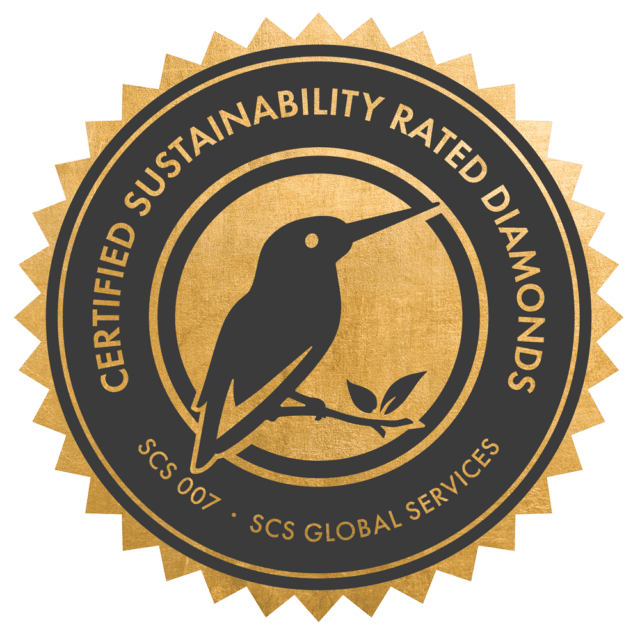
Certified Sustainability Rated, Climate-Neutral Diamonds
Based at the Carnegie Institution for Science, my supplier is a global industry leader in Chemical Vapor Deposition (CVD) diamond growth, and the first diamond company to be third-party sustainability certified and climate neutral. Their diamonds are fully traceable to their state-of-the-art laboratory in the Washington D.C. area.
Their patented, sustainable production practices have resulted in net zero carbon footprint since their founding, with 100% avoided impacts on land, freshwater and marine water; net zero impacts on water resources and regional air and water quality; reduction on non-renewable energy and ocean acidification, among other key environmental considerations. They back up their sustainability certification on the product level through source-to-market traceability, forensic origin testing, and third-party auditing.
So here we go: I will probably never get over the awe of a natural diamond that grew over millions of years deep in the earth. I will continue to support and work with certified natural Canadian and Botswana diamonds. But now I can finally also offer you truly sustainable, fully traceable, U.S.A. grown, guaranteed conflict-free lab-grown diamonds.
And after jumping through some hoops, I am so proud to say that I am finally 1 of only 5 Canadian accredited retailers for certified SCS sustainability rated diamonds.
Let me find you the perfect one for your next Custom Project!
also ethically sourced:

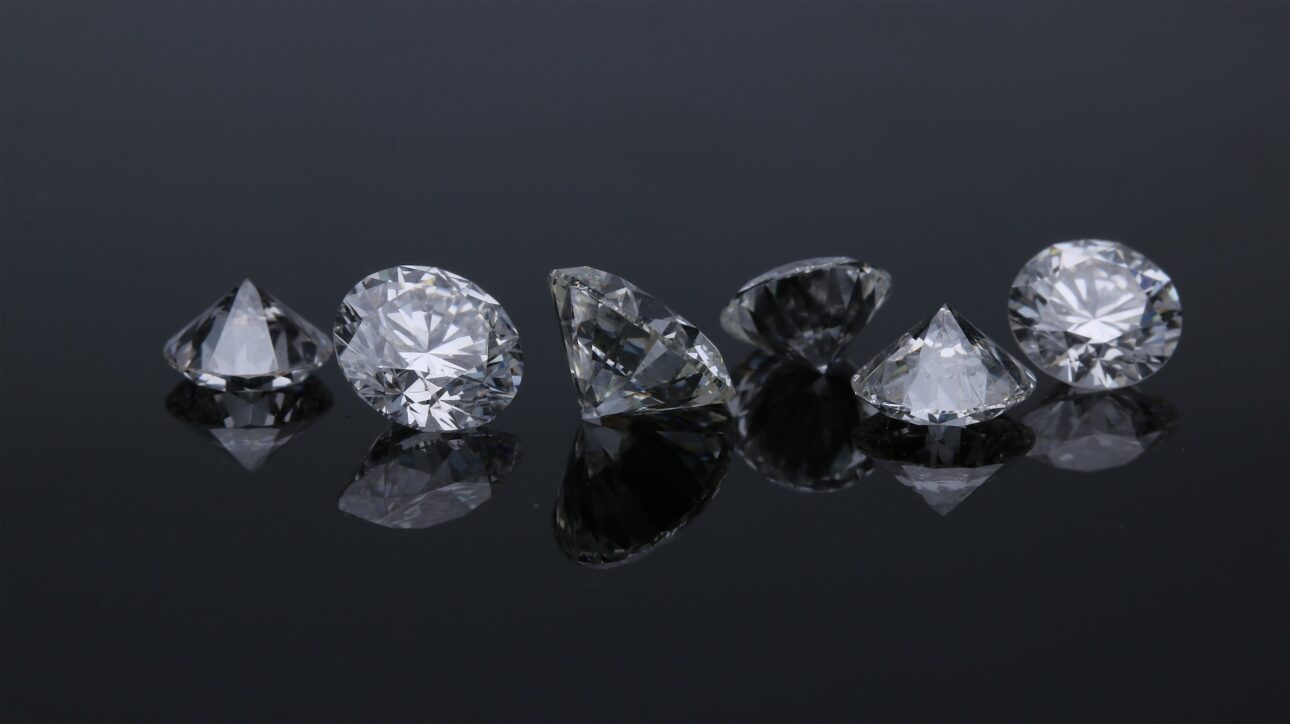
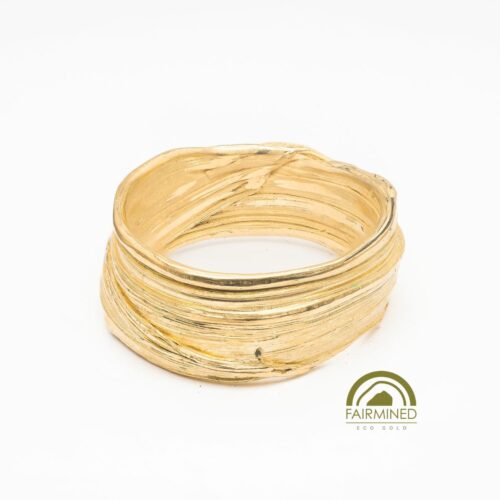
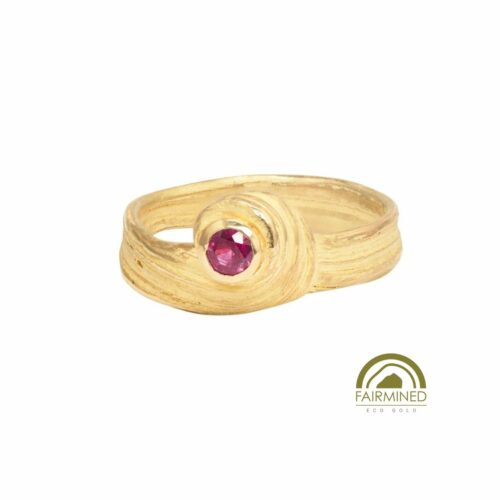
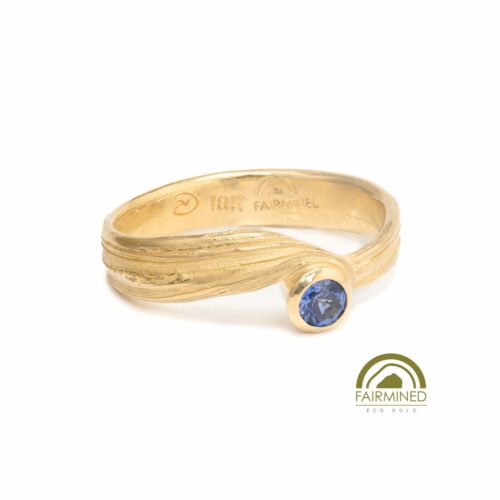
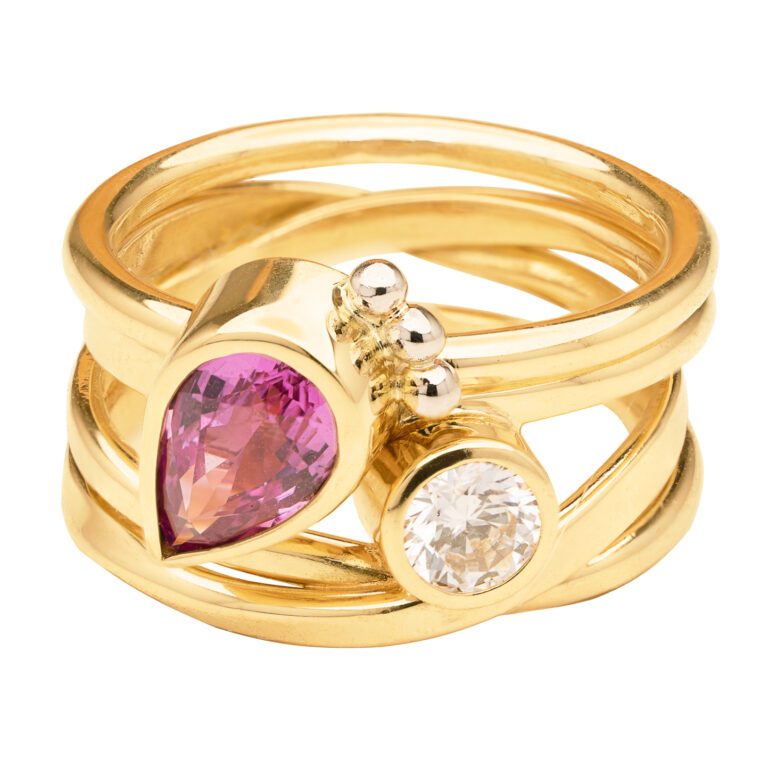
Super interesting! Thank you for the insights!
Thank you, Julia.
It’s been quite the journey to gather all the information and examine it carefully, so that I could arrive at the correct decision and supplier in the end.
Honestly I ended up shortening this article quite a bit – I know so much more about these topics, and am eager to share my knowledge. But that’ll have to wait for another blog post!